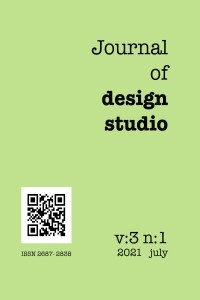Abstract
Learning in design studios is a complex process that overwhelms the students and results in common mutual-misunderstandings between student-teacher. This research aims to tackle teachers' role in the design studio and explore how they can help students navigate the design learning complexities. The emphasis in learning design is primarily on students who are not aware of their learning. This puts teachers at a disadvantage, sometimes not knowing what to do or concentrating on students' learning but not knowing their teaching, or even focusing on their teaching but not aware of the importance of learning how to teach. What is the teacher-student interaction patterns that can help students get over/deal with complexities in design studios learning environments? Can building up awareness of the teachers' role help the students learn and enhance their teaching methods? The research carried out a literature review to draw a holistic understanding of the dimensions of complexities in design studios and teachers' role to solve these difficulties. It can be concluded the importance of the teacher's role in teaching design is as essential as the role of the students in learning design. Teacher-student interaction enhances the students' design learning and the teachers' design teaching. Students should be aware of their roles as learners and the role of their teachers. Agreeing with the students makes the teaching-learning journey more fruitful while students get rid of their uncertainty and be more confident.
Thanks
Thanks, should go to the assistant professor. Fehmi Dogan for his extended a significant amount of assistance and support. This study was done under his supervision in one of the PhD courses in the Dept. of Architecture at Izmir Institute of Technology, Izmir, Turkey.
References
- Anthony, K. H. (1991). Design juries on trial: The renaissance of the design studio. Van Nostrand Reinhold.
- Archer, B. (1979). Design as a discipline. Design studies, 1(1), 17-20.
- Beinart, J. (1981). Structure of the Content of Design. Architecture and Education Study, 1, 159-338.
- Chen, J. D., & Heylighen, A. (2006). Learning design teaching. Changing Trends in Architectural Design Education, 577-588.
- Cross, N. (1982). Designerly ways of knowing. Design studies, 3(4), 221-227.
- Dutton, T. A. (1987). Design and studio pedagogy. Journal of architectural education, 41(1), 16-25.
- Dutton, T. A. (1991). The hidden curriculum and the design studio: Toward a critical studio pedagogy. Voices in architectural education: Cultural politics and pedagogy, 165-194.
- Holmberg, B. 1986. Growth and Structure of Distance Education. London: Croom-Helm.
- Kolb, A. Y., Kolb, D. A., Passarelli, A., & Sharma, G. (2014). On becoming an experiential educator: The educator role profile. Simulation & Gaming, 45(2), 204-234.
- Kolb, D. A. (2014). Experiential learning: Experience as the source of learning and development. FT press.
- Lawson, B. (2006). How designers think: The design process demystified. Routledge.
- Lawson, B. (2018). The Design Student's Journey: Understanding How Designers Think: Routledge.
- Lawson, B., & Dorst, K. (2013). Design expertise. Routledge.
- Ledewitz, S. (1985). Models of design in studio teaching. Journal of architectural education, 38(2), 2-8.
- Liow, Z. (2020). Two minds are better than one: Breeding collaborative mindsets for emerging design-led transdisciplinary practices. Online lecture: https://www.youtube.com/watch?v=QO8rtA4lJVE&t=194s. (accessed 15 March 2021)
- McLaren, P. L. (1988). The liminal servant and the ritual roots of critical pedagogy. Language Arts, 65(2), 164-180.
- Moore, M. G. (1989). Three types of interaction. Polanyi, M. (2009). The tacit dimension. University of Chicago Press.
- Raami, A. (2019). Towards solving the impossible problems. Sustainability, Human Well-Being, and the Future of Education, 201.
- Rapoport, A. (1984). There is an urgent need to reduce or eliminate the dominance of the studio. Architectural Record, 172(12), 100.
- Reddy, M.J. (1979). "The Conduit Metaphor -- A case of frame conflict in our language about language". in Metaphor and Thought, Ortony, A. ed. Cambridge University Press, Cambridge, 164-201.
- Rittel, H. W., & Webber, M. M. (1973). Dilemmas in a general theory of planning. Policy Sciences, 4(2), 155-169.
- Savery, J. R., & Duffy, T. M. (1995). Problem based learning: An instructional model and its constructivist framework. Educational technology, 35(5), 31-38.
- Schön, D. (1981). Learning a Language, Learning to Design. Architecture Education Study,1.
- Schön, D. (1983). The reflective practitioner. How Professionals Think In Action. Basic Books, Inc. USA.
- Schön, D. (1985). The design studio: An exploration of its traditions and potential. London: Royal Institute of British Architects.
- Simon, H. A. (1973). The structure of ill-structured problems. Artificial intelligence, 4(3- 4), 181-201.
- Thompson, N., & Pascal, J. (2012). Developing critically reflective practice. Reflective practice, 13(2), 311-325.
- Vygotsky, L. (1978). Social development theory. Instructional Design.
- Yanar, A. (1999). The silenced complexity of architectural design studio tradition: pedagogy, epistemology and the question of power (Doctoral dissertation, Oxford Brookes University).
- Online references: 1. Kolb Educator Role Profile (KERP) https://learningfromexperience.com/themes/kolb-educator-role-profile-erp/ (accessed 15 Jan 2021)
Abstract
References
- Anthony, K. H. (1991). Design juries on trial: The renaissance of the design studio. Van Nostrand Reinhold.
- Archer, B. (1979). Design as a discipline. Design studies, 1(1), 17-20.
- Beinart, J. (1981). Structure of the Content of Design. Architecture and Education Study, 1, 159-338.
- Chen, J. D., & Heylighen, A. (2006). Learning design teaching. Changing Trends in Architectural Design Education, 577-588.
- Cross, N. (1982). Designerly ways of knowing. Design studies, 3(4), 221-227.
- Dutton, T. A. (1987). Design and studio pedagogy. Journal of architectural education, 41(1), 16-25.
- Dutton, T. A. (1991). The hidden curriculum and the design studio: Toward a critical studio pedagogy. Voices in architectural education: Cultural politics and pedagogy, 165-194.
- Holmberg, B. 1986. Growth and Structure of Distance Education. London: Croom-Helm.
- Kolb, A. Y., Kolb, D. A., Passarelli, A., & Sharma, G. (2014). On becoming an experiential educator: The educator role profile. Simulation & Gaming, 45(2), 204-234.
- Kolb, D. A. (2014). Experiential learning: Experience as the source of learning and development. FT press.
- Lawson, B. (2006). How designers think: The design process demystified. Routledge.
- Lawson, B. (2018). The Design Student's Journey: Understanding How Designers Think: Routledge.
- Lawson, B., & Dorst, K. (2013). Design expertise. Routledge.
- Ledewitz, S. (1985). Models of design in studio teaching. Journal of architectural education, 38(2), 2-8.
- Liow, Z. (2020). Two minds are better than one: Breeding collaborative mindsets for emerging design-led transdisciplinary practices. Online lecture: https://www.youtube.com/watch?v=QO8rtA4lJVE&t=194s. (accessed 15 March 2021)
- McLaren, P. L. (1988). The liminal servant and the ritual roots of critical pedagogy. Language Arts, 65(2), 164-180.
- Moore, M. G. (1989). Three types of interaction. Polanyi, M. (2009). The tacit dimension. University of Chicago Press.
- Raami, A. (2019). Towards solving the impossible problems. Sustainability, Human Well-Being, and the Future of Education, 201.
- Rapoport, A. (1984). There is an urgent need to reduce or eliminate the dominance of the studio. Architectural Record, 172(12), 100.
- Reddy, M.J. (1979). "The Conduit Metaphor -- A case of frame conflict in our language about language". in Metaphor and Thought, Ortony, A. ed. Cambridge University Press, Cambridge, 164-201.
- Rittel, H. W., & Webber, M. M. (1973). Dilemmas in a general theory of planning. Policy Sciences, 4(2), 155-169.
- Savery, J. R., & Duffy, T. M. (1995). Problem based learning: An instructional model and its constructivist framework. Educational technology, 35(5), 31-38.
- Schön, D. (1981). Learning a Language, Learning to Design. Architecture Education Study,1.
- Schön, D. (1983). The reflective practitioner. How Professionals Think In Action. Basic Books, Inc. USA.
- Schön, D. (1985). The design studio: An exploration of its traditions and potential. London: Royal Institute of British Architects.
- Simon, H. A. (1973). The structure of ill-structured problems. Artificial intelligence, 4(3- 4), 181-201.
- Thompson, N., & Pascal, J. (2012). Developing critically reflective practice. Reflective practice, 13(2), 311-325.
- Vygotsky, L. (1978). Social development theory. Instructional Design.
- Yanar, A. (1999). The silenced complexity of architectural design studio tradition: pedagogy, epistemology and the question of power (Doctoral dissertation, Oxford Brookes University).
- Online references: 1. Kolb Educator Role Profile (KERP) https://learningfromexperience.com/themes/kolb-educator-role-profile-erp/ (accessed 15 Jan 2021)
Details
| Primary Language | English |
|---|---|
| Subjects | Architecture |
| Journal Section | Review |
| Authors | |
| Publication Date | July 20, 2021 |
| Published in Issue | Year 2021 Volume: 3 Issue: 1 |
This work is licensed under a Creative Commons Attribution 4.0 International License.
The articles published in Journal of Design Studio had been similarity checked by intihal.net

CALL FOR ARTICLES
Journal of Design Studio call for research papers on studios in all disciplines. Please submit your article by using Dergipark online submission system.



